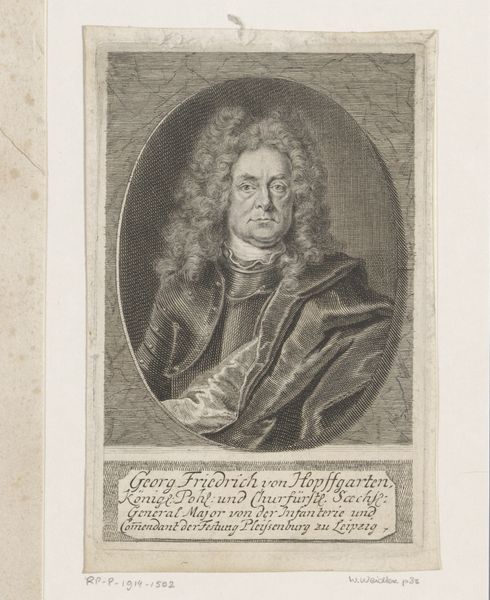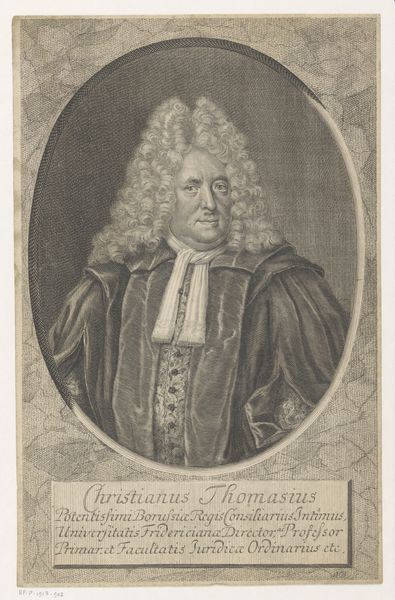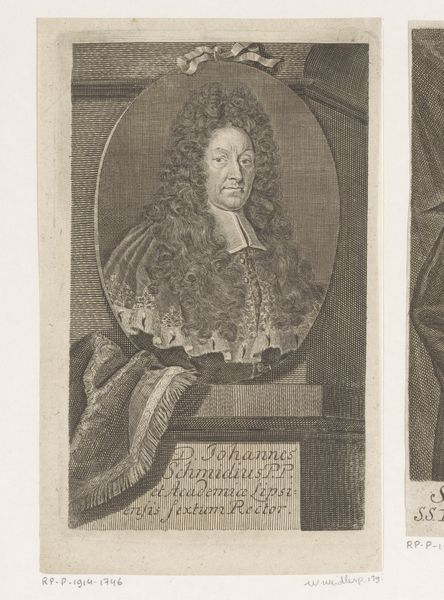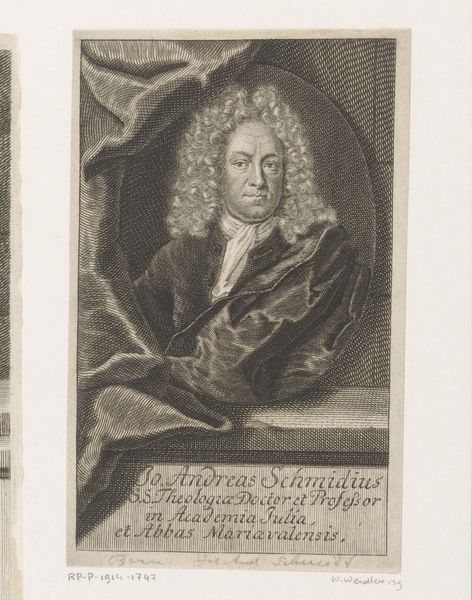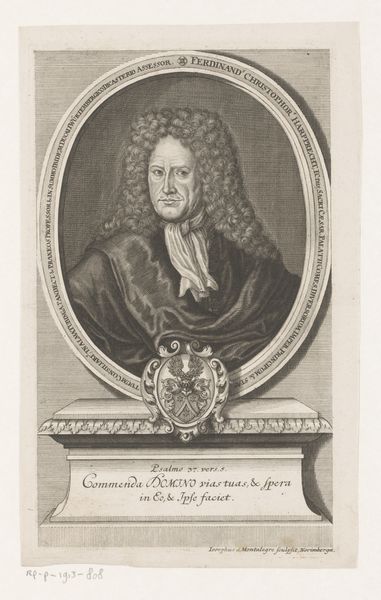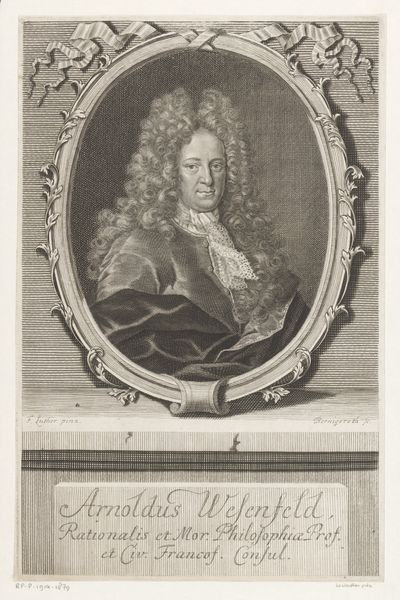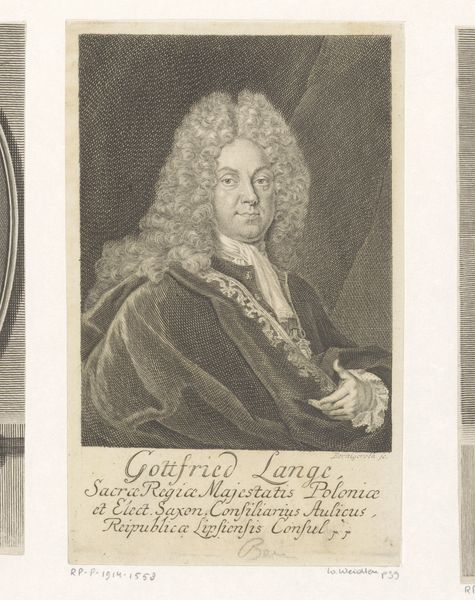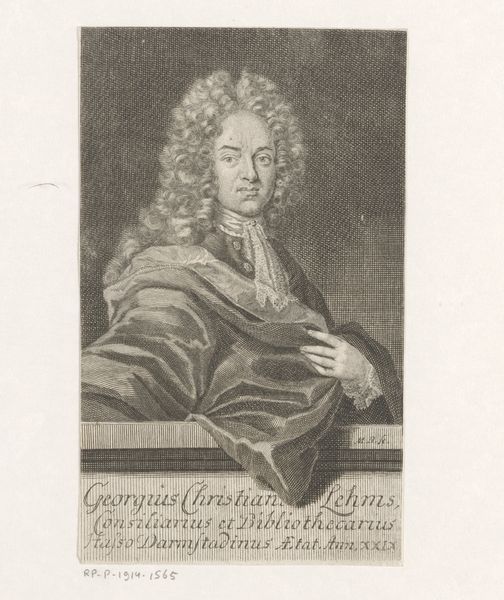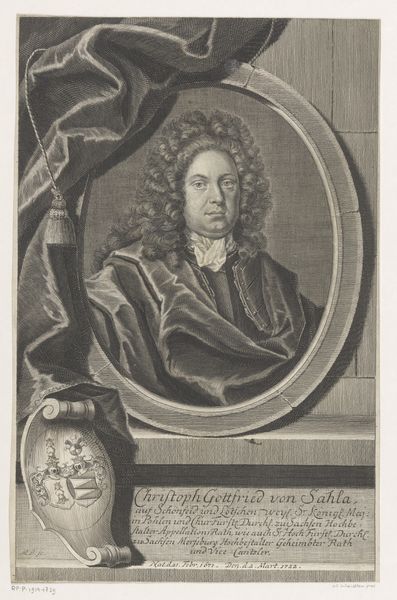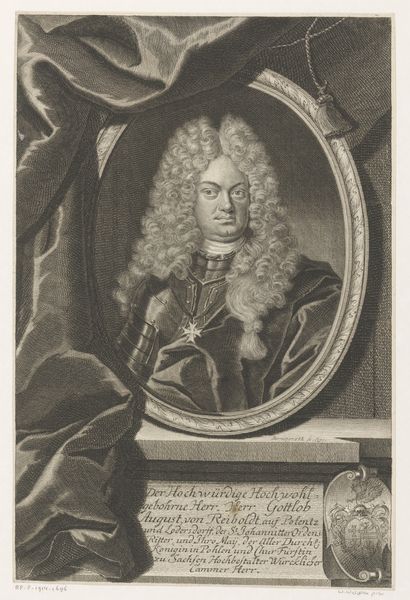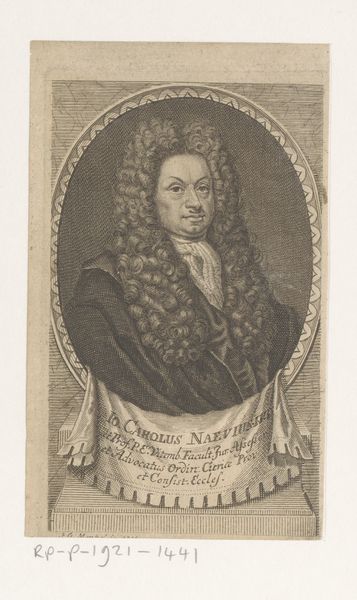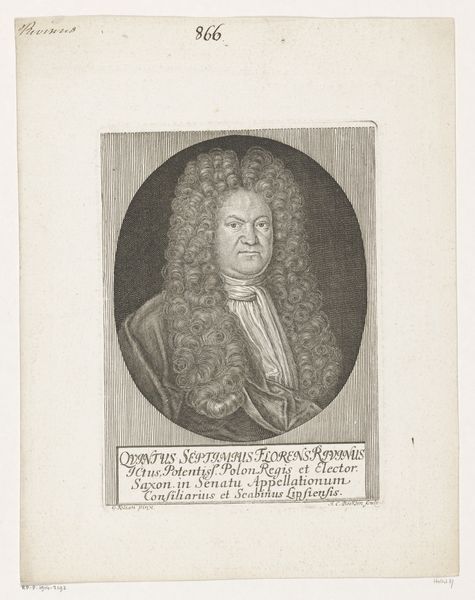
print, engraving
#
portrait
#
baroque
# print
#
old engraving style
#
history-painting
#
engraving
Dimensions: height 153 mm, width 90 mm
Copyright: Rijks Museum: Open Domain
Curator: Here, we have a Baroque-style portrait titled "Portret van Burkhard Gotthelf Struve" created around 1713, currently held at the Rijksmuseum. It's an engraving. What's your initial reaction? Editor: My first impression is the sheer detail achieved through the engraving process; the intricate lines giving form to the man’s wig and clothing are remarkable. It seems so precise. Curator: Absolutely. This level of detail, of course, isn't accidental. Looking closer, you can tell it was created by Johann Martin Bernigeroth. But think about the power dynamics at play. A man of importance immortalized by the labor of an engraver, part of a complex system of patronage and dissemination. How do we place that within broader social contexts? Editor: Well, the engraving itself points to that. It's a reproducible medium, meant for distribution. Think about the materiality—the copper plate, the ink, the paper. This image could circulate among the scholarly community, solidifying Struve’s reputation. Curator: Exactly. And who was Burkhard Gotthelf Struve? The inscription tells us: historian, jurist... figures of the time. Considering his status and the style—the baroque, known for its grandiosity—this portrait speaks volumes about identity and power during that period. Is there any reading to be extracted here about the cultural impact this portrait may have held? Editor: For me, the interest also lies in the technical skill required to produce it. The engraver is as essential to shaping Struve's image as Struve himself, despite being largely anonymous. It highlights the tension between manual labor and intellectual recognition within the artistic production. Curator: Very well noted, both from technical but also class oriented perspective. What you pointed makes the material world intertwined in history so well presented by the image, more approachable I think. Editor: Indeed, by engaging with the means of its production, we start seeing the bigger picture behind it, understanding not only its social origins but also how an image could disseminate ideas across time.
Comments
No comments
Be the first to comment and join the conversation on the ultimate creative platform.
